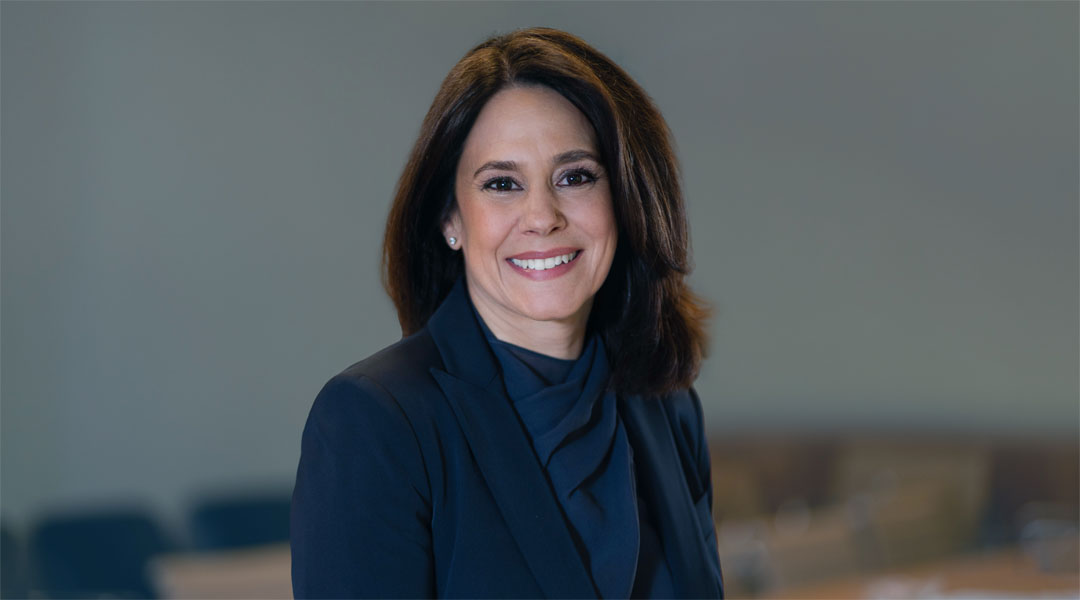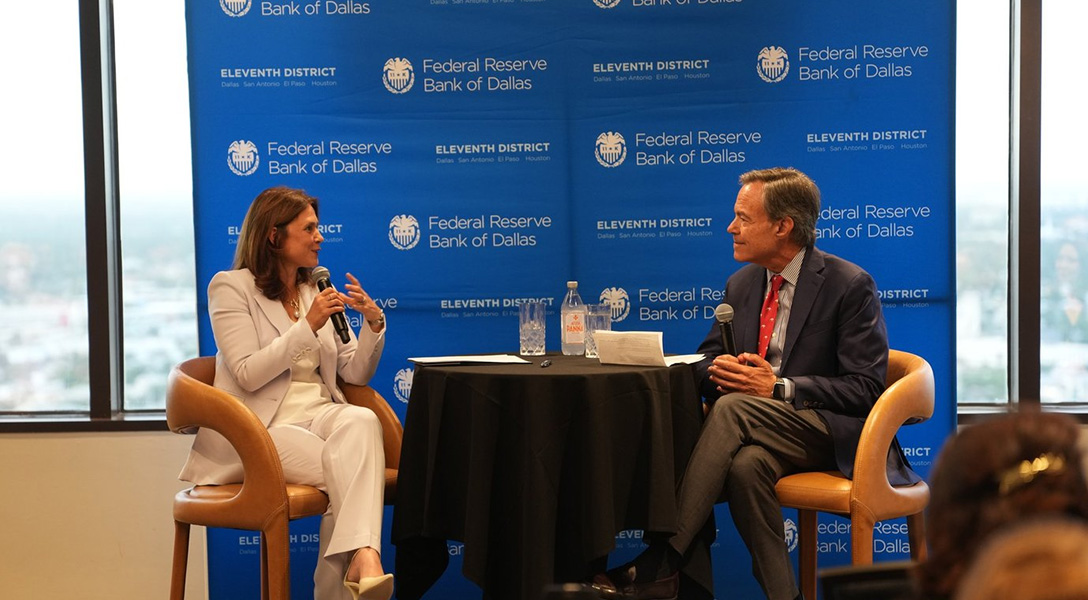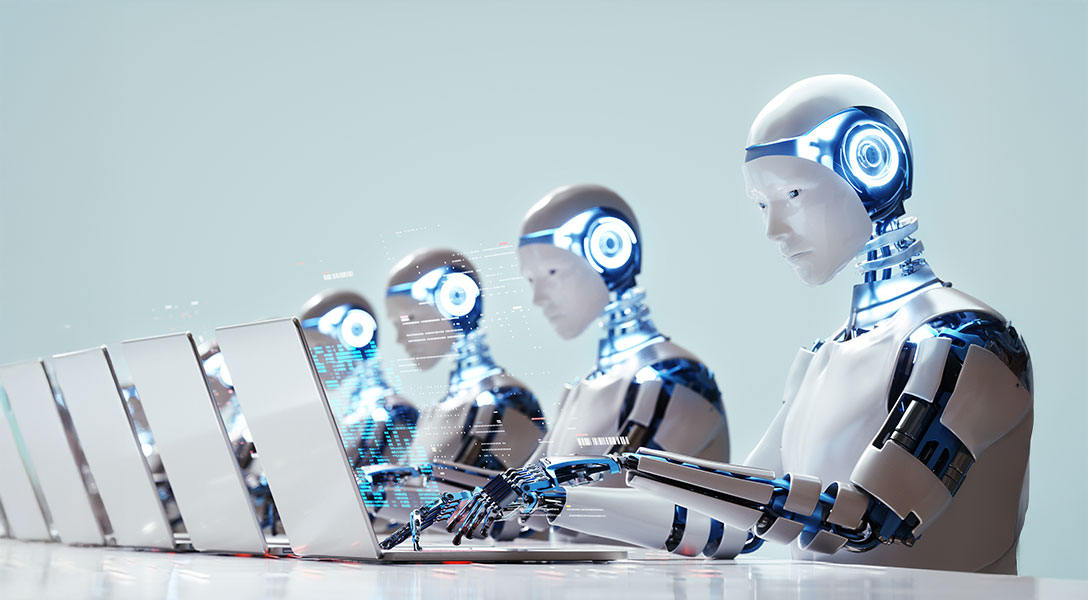
Texas firms open to AI as tariff work-around strategy
Artificial intelligence may provide a means for businesses to mitigate some of the highest effective tariff rates since the 1930s. Recent Texas Business Outlook Survey (TBOS) results indicate heightened artificial intelligence (AI) adoption among firms in the region.
Firms facing higher tariff-related input costs and narrowing profit margins will look to accelerate cost-saving measures. In some instances, AI and automation offer work-arounds to increase productivity and reduce labor requirements. Survey respondents said they were open to such a strategy and in many cases were already AI users.
Technology adoption in response to new business challenges is not unprecedented. It occurred most recently in response to pandemic-era shutdowns and subsequent labor shortages.
Texas firms report surging AI adoption
Dallas Fed survey responses over the past year have shown an increase in AI usage among Texas businesses. Adoption of generative AI, which is broadly defined as a form of AI that autonomously generates new content, has been particularly notable. By comparison, traditional AI is explicitly programmed to perform specific tasks. In May, 59.1 percent of TBOS respondents reported using either generative or traditional AI, a nearly 21-percentage-point jump from 38.3 percent in April 2024.
Generative AI drove much of this growth. The share of firms reporting using some form of generative AI (either generative alone or a mix of generative and traditional) increased from 20 percent in April 2024 to 36 percent in May 2025 (Chart 1). The share of businesses that reported only using traditional AI or weren’t sure what type they used increased less dramatically.
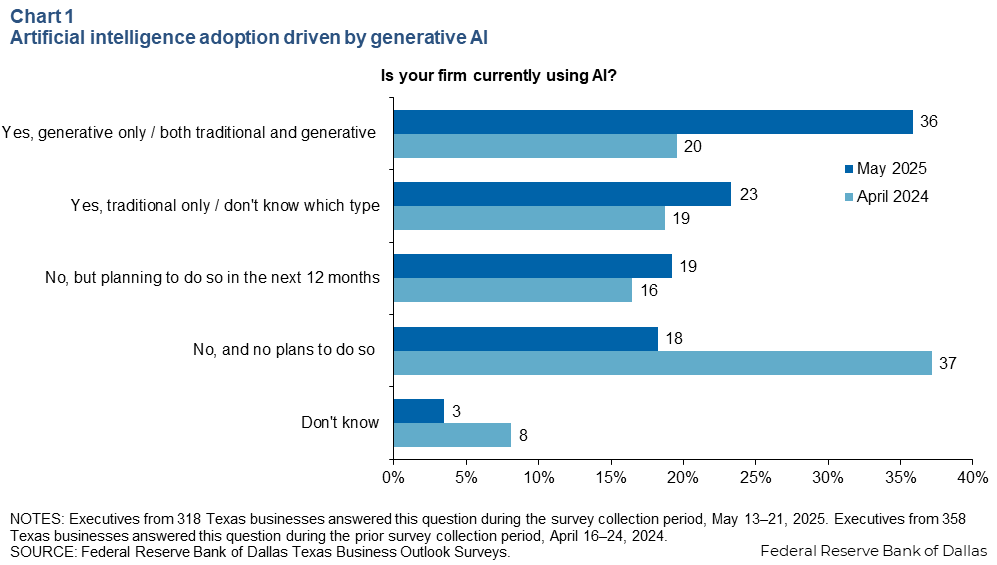
The overall pace of AI adoption is accelerating rapidly. Only 5.4 percent of firms reported using AI in 2018. By 2024, that share had jumped nearly 33 percentage points to 38.3 percent. A further 21-percentage-point increase has occurred in just the past year.
A February 2025 Federal Reserve Board synopsis of business surveys conducted in the U.S. and internationally found 5 to 40 percent of firms used some form of AI in late 2023 or 2024. Among TBOS firms in 2024, 38 percent reported AI use.
Additionally, generative AI adoption has occurred more quickly relative to other once-new technologies, such as the internet and the personal computer. It took slightly more than a decade following the release of the first mass market PCs for the adoption rate to reach the current rate of AI adoption among TBOS firms. The first mass-market internet product required four years from its introduction in 1995 to reach a 36 percent adoption rate (Chart 2).
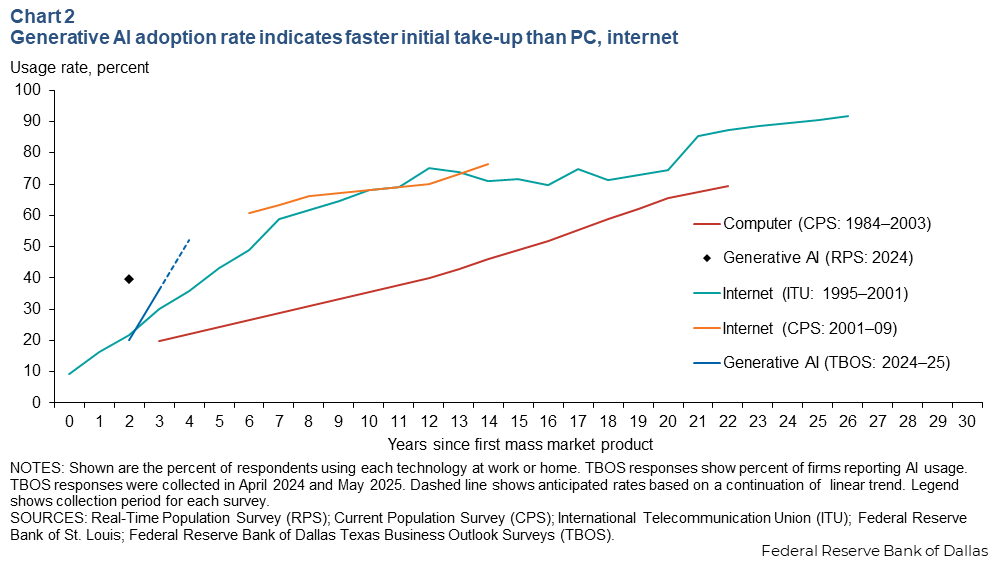
Generative AI achieved that rate in its first three years, according to Dallas Fed survey estimates. It remains to be seen if—as with other technologies—uptake will slow after reaching 60 percent .
Assuming a linear rate of growth from now until the 60 percent level is reached, slightly more than half of Texas firms will be using generative AI by next year.
Will firms use AI to mitigate tariff impacts?
Businesses have scrambled to rearrange supply chains and adapt to rising costs in response to changing U.S. tariff policies. Responses to a special question from the May 2025 TBOS suggest tariffs could motivate near-term AI deployment.
Around a quarter of respondents said their firms would increase automation and/or AI use to offset the impact of higher tariffs (Chart 3). However, the vast majority of those firms—around 85 percent—already use AI. Fewer than 10 percent plan to adopt AI in the next 12 months.
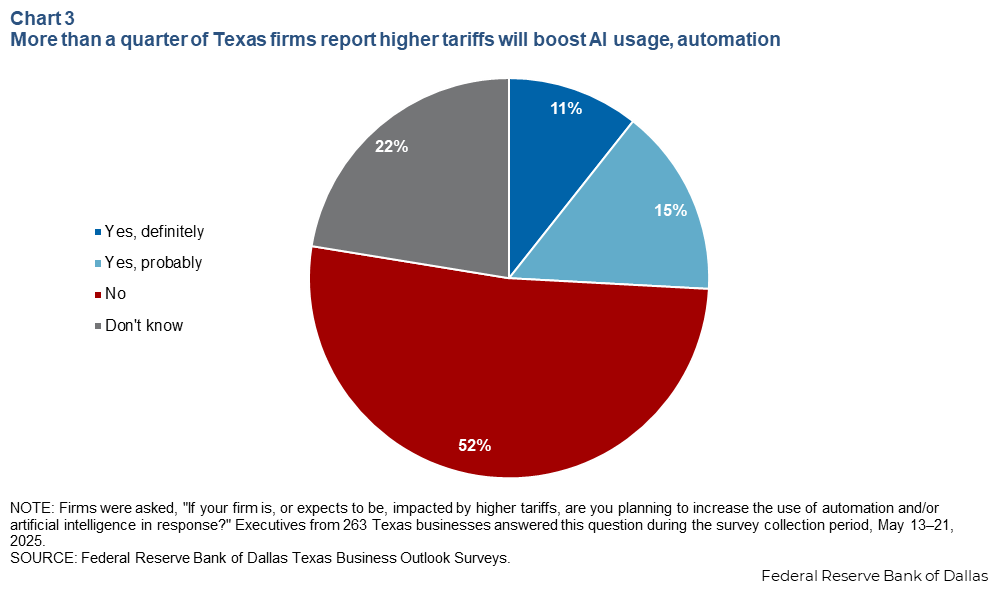
At the moment, it appears that higher tariffs will cause firms already using AI to do so more intensively rather than motivate firms not already using the technology to invest in it. This could change depending on the final tariff policy and how beneficial and accessible generative AI becomes.
Productivity gains cited as top benefit; worker replacement rare
Generative AI is touted as a labor-saving technology, but it’s unclear whether firms will use it to reduce headcount or if they will hold employment steady. Dallas Fed research suggests that the negative impact on employment will be limited. Similarly, TBOS results show a small impact on labor thus far.
Only around 8 percent of TBOS respondents reported that generative AI decreased their need for workers, while around 3 percent reported an increased need for workers. (Chart 4).
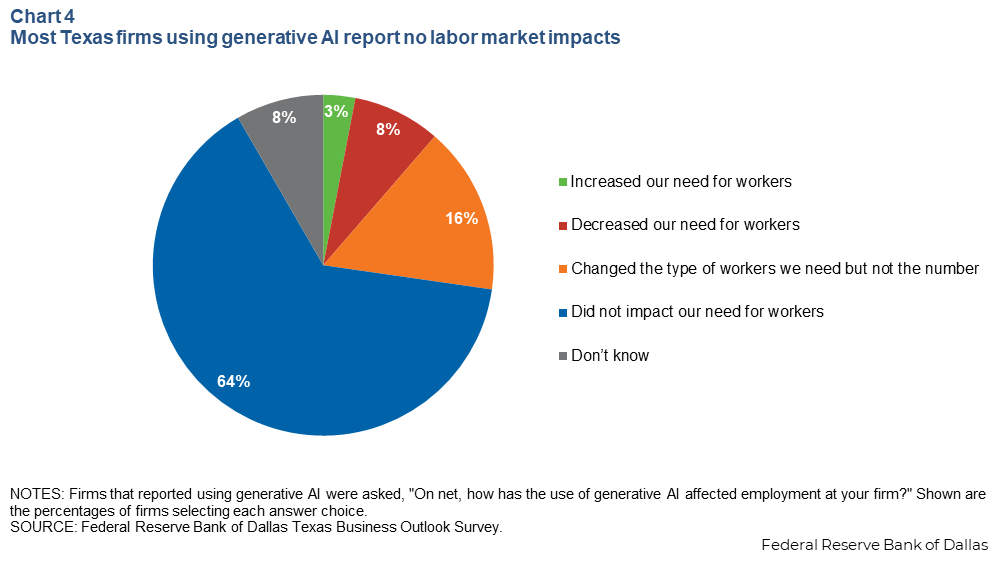
Some 16 percent said generative AI changed the type of workers needed but not the number. Firms reported requiring more highly skilled labor and fewer mid- and low-skilled workers.
This goes against some assessments that generative AI will supplant white-collar professions.
Despite the limited labor market impact, a large majority of firms reported that generative AI increased productivity. The promise of such gains has been a big AI selling point, according to recent Dallas Fed research.
AI’s so-far limited workforce impact could be partially due to the pandemic, which created a period of extensive labor shortages, especially among low- and medium- skilled workers. Companies may be hesitant to dismiss employees they worked hard to attract. Instead, roles may be adjusted rather than eliminated.
AI adoption appears to be in full force and will likely get a slight boost from higher tariffs. However, significant job replacement due to generative AI may not come to fruition in the near term.
About the authors



